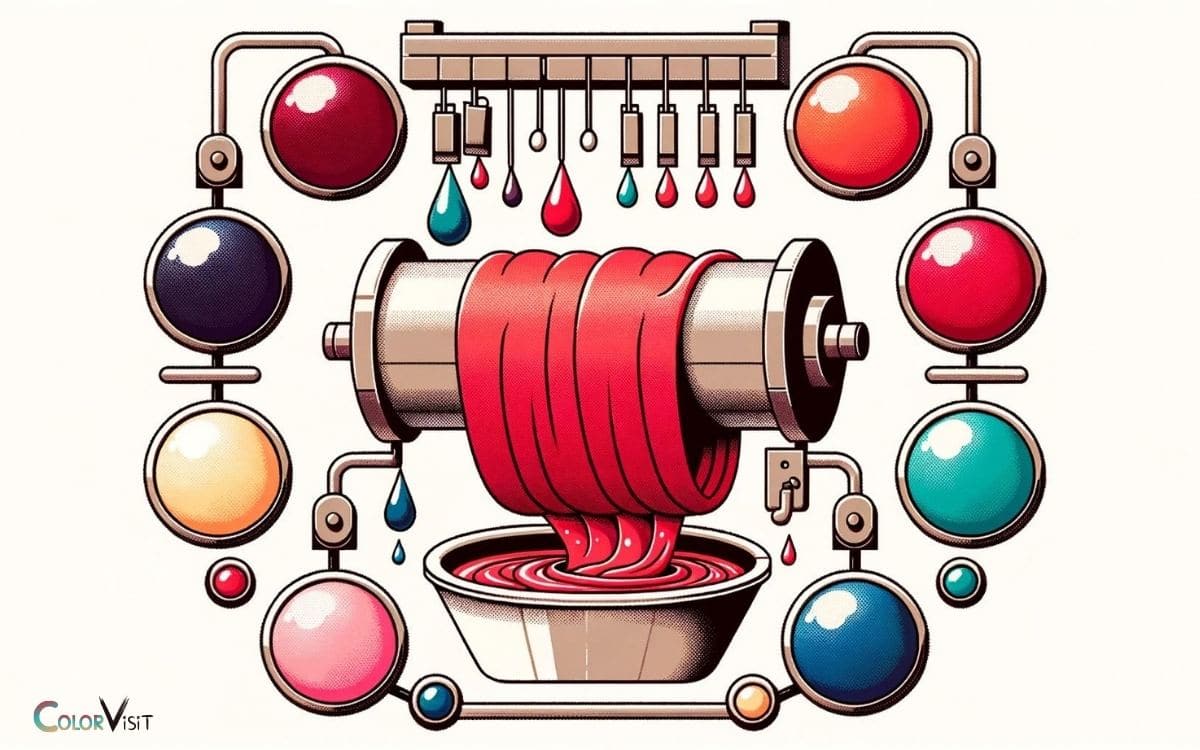What Color Can You Dye Red Fabric? Red, Brown, Purple!
These include darker shades of red, brown, purple, and black. When it comes to dyeing red fabric, the color options can be somewhat limited due to the existing color’s intensity.
Dyeing red fabric requires understanding color theory since red is already a vibrant and dominant color.
Here’s how you can approach it:
Transform your red fabric items with a fresh dye, breathing new life into them and expanding your wardrobe or textile collection with rich, deep colors.
Key Takeaway
Understanding Color Theory and Red Fabric Dyeing
When dyeing red fabric, it is essential to understand color theory and the principles of fabric dyeing to achieve the desired results.
- Red is a primary color, and its shade can be altered by mixing it with other colors.
- To achieve the desired hue when dyeing red fabric, it is crucial to comprehend the color wheel and how different colors interact with red.
- Additionally, understanding the properties of the fabric and the specific type of dye being used is essential for successful dyeing.
Factors such as the fabric’s fiber content, weight, and weave all influence the final color result.
Achieving Deeper Reds With Dyeing Techniques
To achieve deeper reds with dyeing techniques, one can employ advanced color layering methods, allowing for a more intense and rich red hue.
This involves strategic application of dyes and pigments to build up the color saturation.
Here are four key techniques for achieving deeper reds:
- Pre-dye Treatment: Prepare the fabric with a mordant or fixative to enhance dye absorption and color retention.
- Multiple Dye Baths: Gradually build up the red color by immersing the fabric in successive dye baths, allowing each layer to deepen the hue.
- Color Mixing: Experiment with blending different shades of red dye to create a custom, deeper tone that suits your preferences.
- Heat Setting: Apply heat or steam to the dyed fabric to help the color penetrate and set, resulting in a more vibrant and lasting red.
Exploring the Possibilities of Overdyeing Red Fabric
The process of overdyeing red fabric involves applying a new layer of dye to alter or enhance the existing red color, creating unique and customizable outcomes.
By carefully selecting the overdye color and controlling the dyeing process, a wide range of new shades and tones can be achieved.
The following table illustrates some possibilities of overdyeing red fabric:
| Original Red Color | Overdye Color | Resulting Outcome |
|---|---|---|
| Cherry Red | Midnight Blue | Deep Plum |
| Scarlet | Golden Yellow | Vibrant Orange |
| Burgundy | Forest Green | Earthy Olive |
| Crimson | Jet Black | Intense Maroon |
Exploring overdyeing techniques opens up a world of creative possibilities, allowing for the transformation of red fabric into a spectrum of new and exciting colors.
This process sets the stage for creating unique tones and shades through color mixing.
Creating Unique Tones and Shades Through Color Mixing
By carefully blending different colors with red fabric dye, you can create a diverse spectrum of tones and shades that will give your fabric a unique and personalized look.
Here are some key points to consider when mixing colors with red fabric dye:
- Primary Colors: Experiment with primary colors like blue and yellow to create a variety of secondary colors that can be mixed with red to produce different shades.
- Color Ratios: Pay attention to the ratios of different colors you mix with red dye, as even small adjustments can significantly impact the resulting tone.
- Testing and Experimentation: Always conduct small-scale tests when mixing colors to understand how they interact and to achieve the desired shade.
- Record Keeping: Keep a record of the color combinations and ratios used to reproduce successful tones and shades consistently.
Transforming Red Fabric With Dip Dyeing and Ombre Effects
Incorporating dip dyeing and ombre effects into red fabric dyeing expands the potential for creating captivating and dynamic color variations.
- Dip dyeing involves partially immersing the fabric into dye, resulting in a gradient effect that transitions from a deep red at one end to a lighter shade at the other.
- Ombre effects, on the other hand, create a seamless transition of color from dark to light or vice versa across the fabric.
- These techniques allow for the exploration of various tones and intensities within the red spectrum, offering a sense of freedom and creativity in fabric dyeing.
Conclusion
The art of dyeing red fabric offers a wide range of possibilities for achieving unique tones and shades.
By understanding color theory and utilizing various dyeing techniques such as overdyeing, color mixing, dip dyeing, and ombre effects, it is possible to transform red fabric into deeper, more vibrant hues.
The exploration of these techniques allows for the creation of visually captivating and distinct fabrics that can enhance any project or design.

